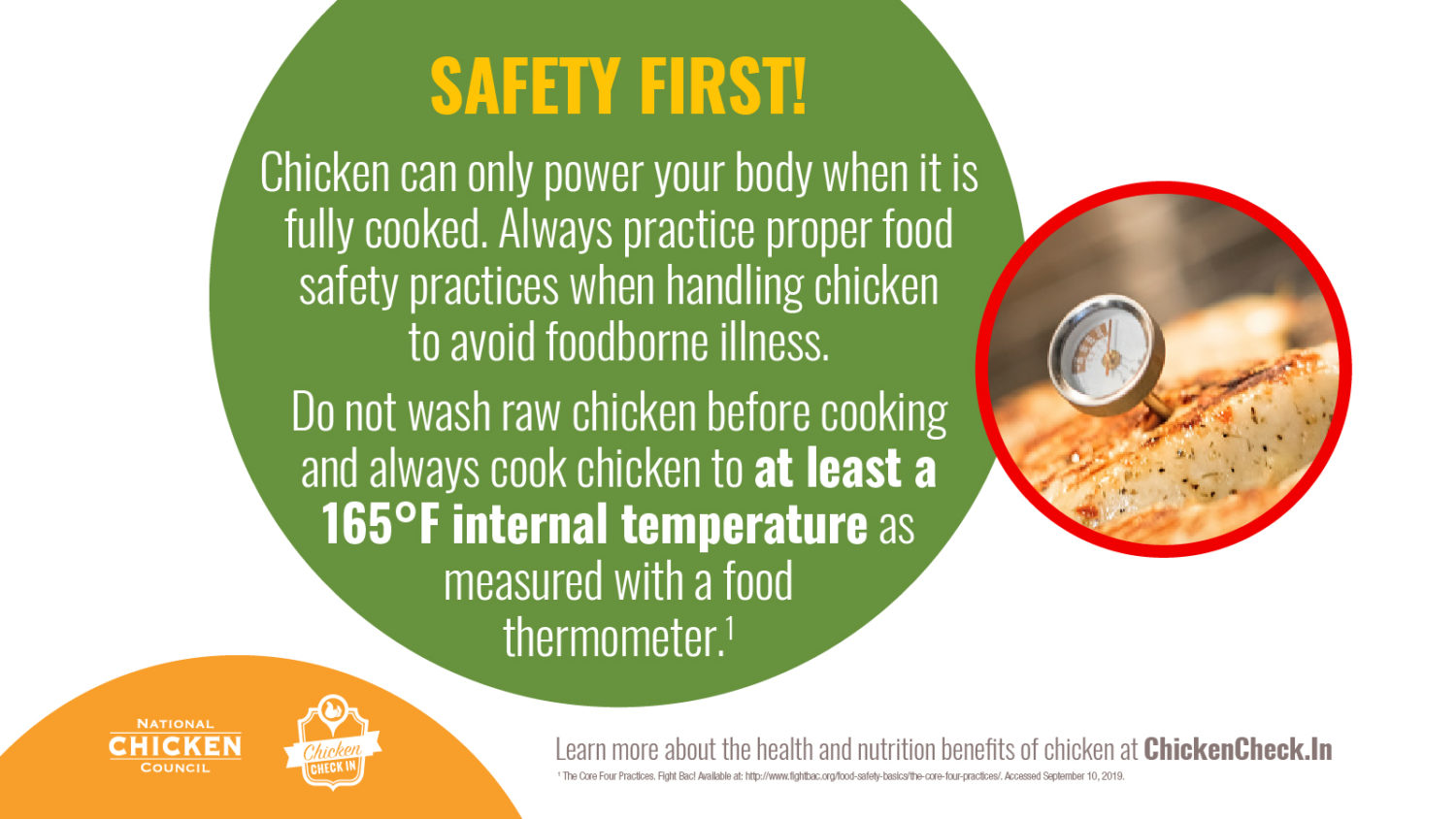Cooking Chicken: What’s the healthiest way to prepare chicken?
What’s the healthiest way to prepare chicken?
Here are dietary guidelines on the best way to prepare chicken from the nation’s leading health organizations:
According to the Dietary Guidelines for Americans 2015-2020:
- Example to reduce fat content of meals: Chicken Baked With Herbs.
- Prepare chicken with little or no added solid fats, sugars, refined starches, and sodium.
According to the American Heart Association:
- Choose chicken without skin and prepare it in healthy ways without added saturated and trans fat.
According to the American Diabetes Association:
- Choose chicken without the skin for less saturated fat and cholesterol.
- Healthy preparation options include broiling, baking, roasting, steaming, or grilling foods.
According to the American Cancer Society:
- Choose chicken and prepare it by baking, broiling or poaching.

Sources:
- American Cancer Society. American Cancer Society Guidelines for Nutrition and Physical Activity. https://www.cancer.org/healthy/eat-healthy-get-active/acs-guidelines-nutrition-physical-activity-cancer-prevention/guidelines.html. Updated July 17, 2017. Accessed September 13, 2019.
- American Diabetes Association. 5. Lifestyle management: standards of medical care in diabetes—2019. Diabetes Care. 2019;42(Supplement 1):S46-S60.
- American Heart Association. Diet and Lifestyle Recommendations. https://www.heart.org/en/healthy-living/healthy-eating/eat-smart/nutrition-basics/aha-diet-and-lifestyle-recommendations. Updated August 15, 2015. Accessed October 7, 2019.
- U.S. Department of Health and Human Services and U.S. Department of Agriculture. 2015 – 2020 Dietary Guidelines for Americans. 8th Edition. https://health.gov/dietaryguidelines/2015/guidelines/. Updated December 2015. Accessed October 7, 2019.
Should I wash chicken before cooking it?
No. In fact, a recent USDA study confirms that you put yourself and those around you at risk of illness when you wash or rinse raw poultry before cooking it.

Source: RTI International for USDA, FSIS, OPACE, Food Safety Education Staff. Food Safety Consumer Research Project: Meal Preparation Experiment Related to Poultry Washing. https://www.fsis.usda.gov/wps/wcm/connect/9bb3a252-e12e-40e5-b76b-cb46a2322c3f/FSCRP_Year+2_Final_Aug2019.pdf?MOD=AJPERES. Updated August 20, 2019. Accessed October 7, 2019.
Is chicken healthier than beef or pork?
According to the American Heart Association (AHA), red meats (beef, pork and lamb) have more saturated fat than chicken, fish and vegetable proteins such as beans. The AHA Diet and Lifestyle Recommendations recommends eating less saturated fat and red meat. But, how healthy an animal protein is for you depends on many things, like the preparation style, cut of meat, serving size, seasonings used, marinades used, sauces used, and side dishes served with the protein.
Sources:
- American Heart Association. Diet and Lifestyle Recommendations. https://www.heart.org/en/healthy-living/healthy-eating/eat-smart/nutrition-basics/aha-diet-and-lifestyle-recommendations. Updated August 15, 2015. Accessed October 7, 2019.
- American Heart Association. Meat, Poultry, and Fish: Picking Healthy Proteins. https://www.heart.org/en/healthy-living/healthy-eating/eat-smart/nutrition-basics/meat-poultry-and-fish-picking-healthy-proteins. Updated March 26, 2017. Accessed October 7, 2019.
Is it better to eat white meat or dark meat chicken? Which is more nutritious?
Dark meat is slightly higher in calories and fat, and does typically contain more vitamins (e.g., riboflavin, thiamin, and vitamins B6 and B12) and minerals (e.g., iron and zinc) than white meat cuts. Dark meat also contains more flavor and is less likely to dry out or become overly chewy during the cooking process due to its juicy, tender texture. You can find a side by side nutritional comparison of dark versus white meat chicken by cut, here. Both dark and white meat chicken are nutritious and can fit into a healthy eating pattern.
Source: U.S. Department of Agriculture (USDA), Agricultural Research Service. FoodData Central. www.fdc.nal.usda.gov. Updated March 2019. Accessed October 7, 2019.
